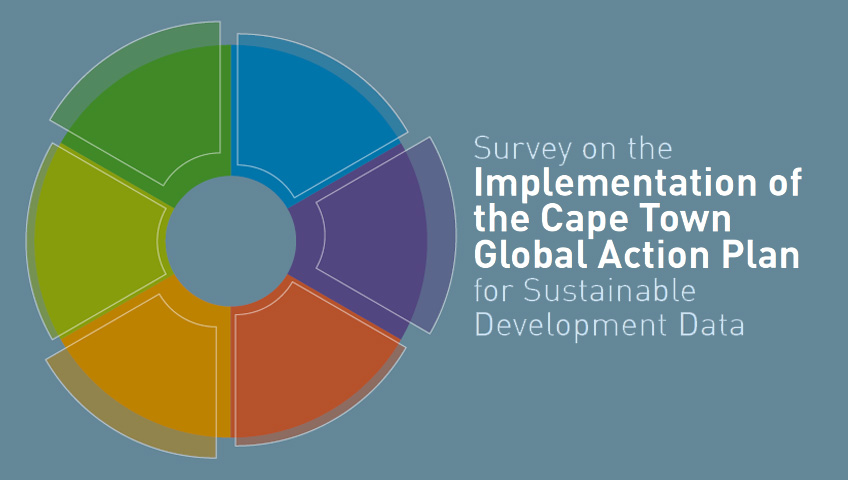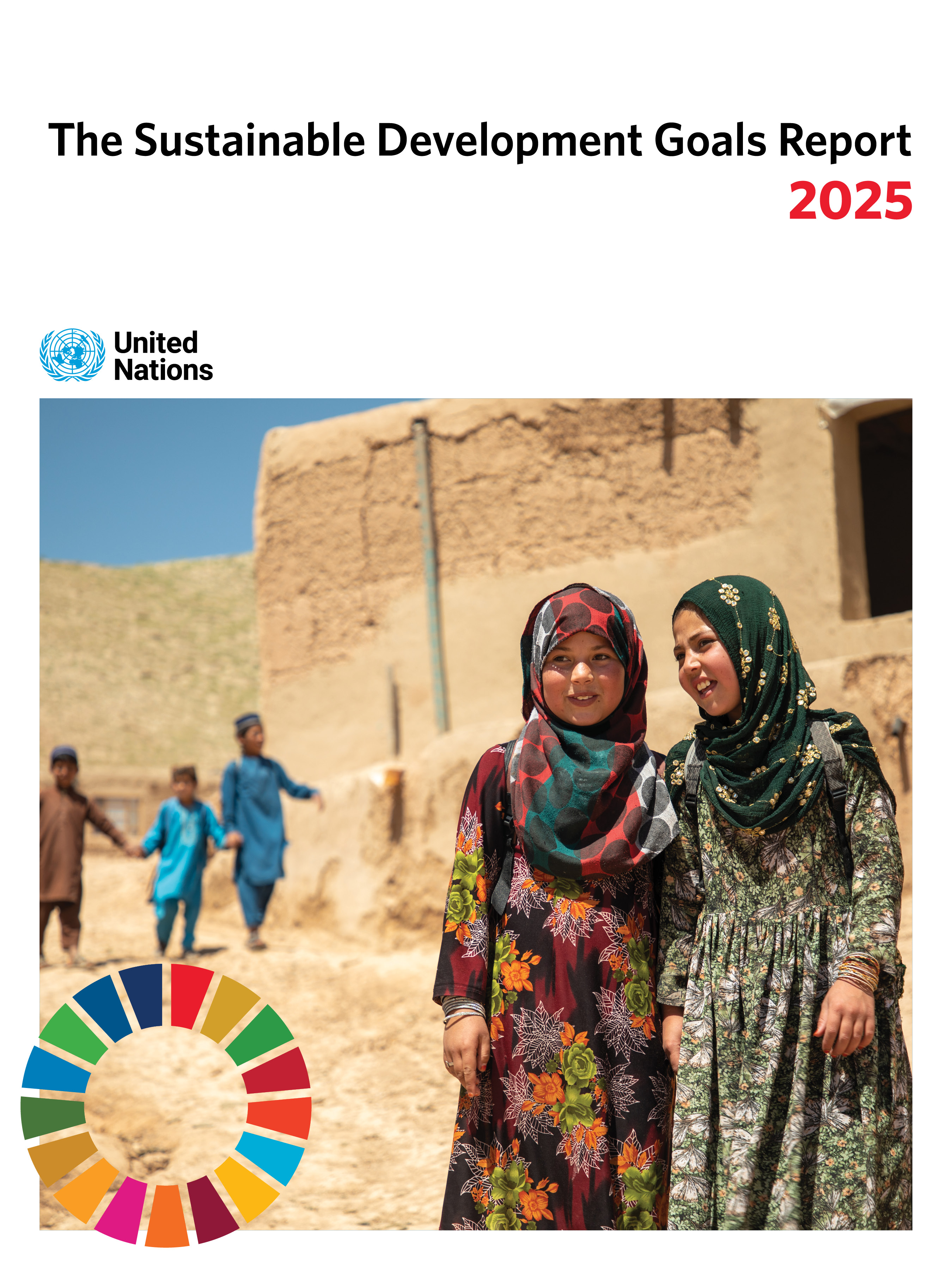IAEG-SDGs
2020 Comprehensive Review Proposals Submitted to the 51st session of the United Nations Statistical Commission for its consideration
Background
The global indicator framework was adopted by the General Assembly in resolution 71/313 and called for the indicator framework to be comprehensively reviewed at the 51st session of the Statistical Commission in 2020 and the 56th session in 2025.
The IAEG-SDG began its process of preparing a package of proposals to be included in this review in late 2018 and developed specific criteria for the implementation of the review that can be found in the IAEG-SDG's Report to the Statistical Commission and on a webpage developed for the 2020 Comprehensive Review process. The webpage includes detailed information on the process the IAEG-SDG undertook, including an open consultation, and contains a complete compilation of all proposals received and reviewed by the group. This webpage presents a compilation of the 36 changes to the global indicator framework proposed for the Commission’s consideration at its 51st session. These proposals fall into four groups:
- 14 proposals for replacements of existing indicators
- 8 proposals for revisions of existing indicators
- 8 proposals for additional indicators
- 6 proposals for deleting indicators1
The tables below present each of the changes proposed in the 2020 Comprehensive Review and the supporting documentation for each proposal (in most cases, a short narrative about the indicator and metadata). The tables include the proposed replacement/revision/addition/ deletion and the target/indicator number. Please reference Annex II in the IAEG-SDG report to the Statistical Commission (E/CN.3/2020/2) for the complete name of indicators being replaced and revised.
A. Replacement Indicator Proposals
| Code | Description | File |
|---|---|---|
| 1.a.1 | Total official development assistance (ODA) grants from all donors that focus on poverty reduction as a share of the recipient country’s gross national income2 | |
| 1.b.1 | Pro-poor public social spending | |
| 7.b.1 | Installed renewable energy generating capacity in developing countries (in Watts per capita) | |
| 11.a.1 | Number of countries that have national urban policies or regional development plans that (a) respond to population dynamics, (b) ensure balanced territorial development, (c) increase local fiscal space | |
| 12.a.1 | Installed renewable energy generating capacity in developing countries (in Watts per capita) (repeat of proposed replacement for 7.b.1) | |
| 12.b.1 | Implementation of standard accounting tools to monitor the economic and environmental aspects of tourism sustainability | |
| 13.2.1 | Number of countries with NDCs, long-term strategies, national adaptation plans, strategies as reported in adaptation communications and national communications | |
| 13.3.1 | Extent to which (i) global citizenship education and (ii) education for sustainable development (including climate change education), are mainstreamed at all levels in (a) national education policies; (b) curricula; (c) teacher education; and (d) student assessment (repeat of 4.7.1/12.8.1) | |
| 13.a.1 | Amounts provided and mobilized in United States dollars per year in relation to the continued existing collective mobilization goal of the $100 billion commitment through to 2025 | |
| 13.b.1 | Number of least developed countries and small island developing States with NDCs, long-term strategies, national adaptation plans, strategies as reported in adaptation communications and national communications (repeat of 13.2.1 replacement proposal with slight amendment) | |
| 15.a.1/15.b.1 | (a) Official development assistance on conservation and sustainable use of biodiversity, and (b) revenue generated and finance mobilised from biodiversity-relevant economic instruments | |
| 17.3.1 | Foreign direct investment (FDI), official development assistance and South-South cooperation as a proportion of gross national income (GNI) | |
| 17.17.1 | Amount of United States dollars committed to public-private partnerships for infrastructure | |
| 17.18.1 | Statistical capacity indicator for SDG monitoring |
B. Revisions to existing indicators
C. Additional Indicator Proposal
| Code | Description | File |
|---|---|---|
| 2.2.3 | Prevalence of anaemia in women aged 15-49 years, by pregnancy status (percentage) | |
| 3.d.2 | Reduce the percentage of bloodstream infections due to selected antimicrobial resistant organisms | |
| 4.1.2 | Completion rate (primary education, lower secondary education, upper secondary education) | |
| 10.4.2 | Redistributive Impact of Fiscal Policy3 | |
| 10.7.3 | Number of migrants killed while attempting to cross maritime, land and air borders | |
| 10.7.4 | Proportion of the population who are refugees, by country of origin | |
| 13.2.2 | Total greenhouse gas emissions per year | |
| 16.3.3 | Proportion of the population who have experienced a dispute in the past two years and who accessed a formal or informal dispute resolution mechanism, by type of mechanism |
D. Proposed Deletions
1.a.1 Proportion of domestically generated resources allocated by the government directly to poverty reduction programmes
4.2.1 Proportion of children under 5 years of age who are developmentally on track in health, learning and psychosocial well-being, by sex - the portion of the indicator that measures progress for children 0-23 months that is currently tier III is proposed to be deleted
8.9.2 Proportion of jobs in sustainable tourism industries out of total tourism jobs
11.c.1 Proportion of financial support to the least developed countries that is allocated to the construction and retrofitting of sustainable, resilient and resource-efficient buildings utilizing local materials
13.3.2 Number of countries that have communicated the strengthening of institutional, systemic and individual capacity-building to implement adaptation, mitigation and technology transfer, and development actions
17.6.1 Number of science and/or technology cooperation agreements and programmes between countries, by type of cooperation
1 The proposed deletion for indicator 4.2.1 is only for deleting the portion of the indicator that is currently Tier III.
2 This is a replacement for indicator 1.a.3 but current indicator 1.a.1 is proposed for deletion so this indicator would become 1.a.1 in the revised global indicator framework.
3 Gini coefficient would be reported as a second series in database as it is a component of this indicator
QUICK LINKS
- 2030 Agenda for Sustainable Development
- SDGs Database
- 2025 Comprehensive Review Process
- Survey on the Implementation of the Cape Town Global Action Plan for Sustainable Development
Data

- SG's progress report 2025
- Statistical Annex 2025
- SDGs report 2025

- Gender Snapshot 2024
- UN Data Commons for the SDGs
-

- Medellin Framework for action on data for sustainable development
- Hangzhou Declaration
- Bern Data Compact
- Cape Town Global Action Plan for Sustainable Development Data
- Dubai Declaration
- Global data community's response to Covid-19
- Statistical Commission